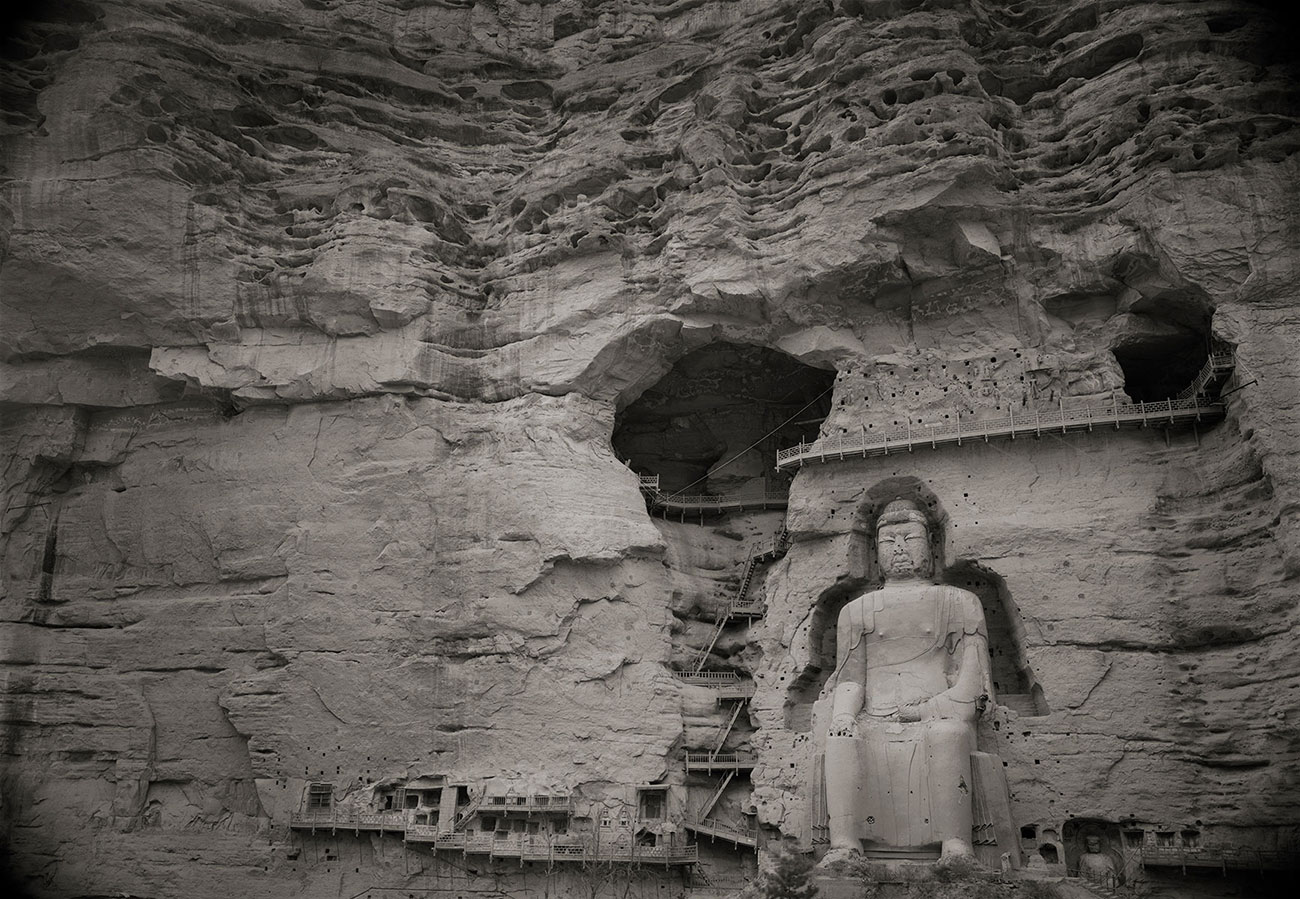
Hallowed ground
Photography exhibit finds art in the world’s ‘Sacred Places’
By Michael H. Hodges/The Detroit News
Photographer Kenro Izu swears it was never his intention to make art. He’s just “a documentarian, an observer,” he says in softly accented English.
All of which may be the case, but if so – what an astonishing observer Izu is, and what a remarkable life’s work.
For almost 30 years, Izu – who was born in Japan but moved to New York in 1969 – has lugged his 300 pounds of camera equipment to some of the world’s most remote spots to shoot crumbling temples and ruin-strewn plateaus, all locations invested with spiritual power by local inhabitants.
The result is “Kenro Izu: Sacred Places,” on display at the Detroit Institute of Arts from Wednesday through Oct. 12, the inaugural show in the DIA’s just-reopened Albert and Peggy de Salle Gallery of Photography.
The show is a moving black-and-white journey that takes the visitor from the Pyramids of Giza to the Caves of the 10,000 Buddhas in western China, with images the photographer has labored to endow, he says, with the particular spiritual atmosphere of that place.
“I don’t intend to create something new from nothing with my photography,” Izu says by phone from his studio up the Hudson River from New York City. “Some people may call my work art, and I’ll gratefully accept the compliment. But that wasn’t my intention.”
Still, says DIA assistant curator for Asian art Amelia Chau, smiling a little, “I definitely consider him an artist.”
The present traveling show was organized by the Peabody Essex Museum of Salem, Mass. Izu’s work has also shown at the Smithsonian Institution’s Arthur M. Sackler Gallery, in a 2002 exhibit titled “Sacred Sites: Silk Road Photographs by Kenro Izu.”
With the exception of a composite image of the bluntly geometric Rancho de Taos Church in New Mexico, the sites Izu has chosen for “Sacred Places” come either from Asian traditions or from what the ancients, whether Egyptians, Druids or Mayans, considered hallowed ground.
Some of these sites, like the Pyramids or Easter Island, will be familiar to most viewers.
Others, however, like the “Aligned Stones of Kermario, Brittany” – 1,029 Stonehenge-like boulders arranged in 10 parallel lines that, in Izu’s image, vanish into the French mist – are tantalizingly exotic and new.
The invisible actor in all of Izu’s work, however, is time.
With “Ruins, Palmyra, Syria,” a row of disintegrating Roman columns marches toward the horizon on a plain strewn with architectural fragments – an oddly moving essay on the centuries’ power to scour the landscape virtually clean of man’s works.
“Kenro talks about waiting for the essence of the spirit of a place to emerge,” says Nancy Barr, DIA associate curator for prints, drawings and photographs, “of capturing its particular atmosphere.”
You might guess that it was religion that motivated this 29-year spiritual quest, but you would be wrong.
Izu, a Buddhist, shrugs off the notion, saying, “I’m not a particularly religious person.”
Instead, he fixes the project’s genesis to a simple yearning left over from childhood to see the Pyramids.
He finally visited in 1979.
“When I got back,” Izu says, “I liked one picture.” He laughs. “Just one out of hundreds! But I did find there’s a special atmosphere to those spaces, and I was intrigued with that.”
So he began exploring other sites he’d daydreamed about as a child – Stonehenge, Easter Island, the Mayan ruins and Angkor Wat.
“Even a child in Japan had read about these places,” he says. “You could call them the seven wonders of the world.”
Izu’s technique is amusingly archaic, a throwback to the earliest days of photography.
He employs a large-frame camera and utilizes a platinum and palladium technique that went out for most photographers with the Tin Lizzie.
Small wonder. It’s a labor-intensive process that involves creating your own photographic paper by hand, coating it with the precious metals. The 14-by-20-inch negatives are then pressed right against the paper, rendering an image that’s the precise size of the negative.
Enlargement is not an option.
“I first encountered this technique with Paul Strand,” Izu says, referring to the iconic photographer from the early 20th century. He chose the technique, Izu adds, because he feels it yields a rich array of tones within the gray spectrum that produces an almost three-dimensional depth.
After documenting architecture for much of his career, Izu, who’s about to turn 60, is now turning his lens toward the people who maintain, or worship at, the various sites he’s visited.
“I’m not only documenting the landscape, but also the monks and caretakers, and the farmers who come to these places as pilgrims,” he says.
His new project is called “India: The Sacred Within.”
Izu says there are only a few places he’s wanted to visit but could not – mostly in the war-torn Middle East.
If time has been the enemy of many of these landmarks, man, he notes, has generally been the greater evil.
“Do you remember that huge Afghan Buddha that was exploded by the Taliban 10 years or so ago?” he asks. “I thought, ‘Oh, I wish I had photographed that.’ Because that sort of thing is happening everywhere.”
